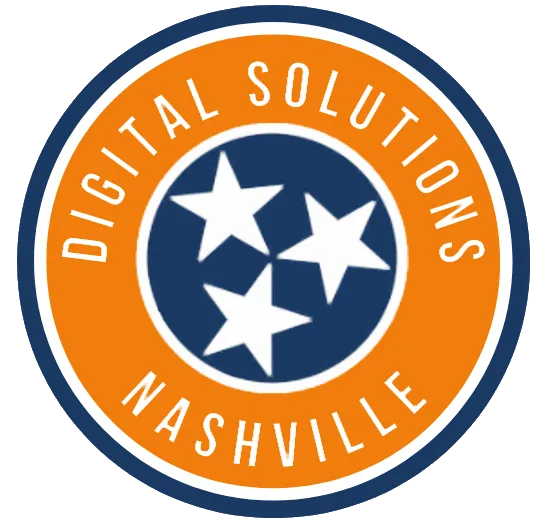
Your Untapped Goldmine
Michael Ryberg | April 19, 2023 | 0 Comments
“We are surrounded by data, but starved for insights.” ~ Jay Baer
Introduction:
In the dynamic world of marketing, businesses are often caught in a perpetual pursuit of acquiring new customers. While expanding one's customer base is undoubtedly crucial for growth, there exists a treasure trove of untapped potential within existing databases of customers and prospects. In this blog post, we'll delve into the advantages of directing marketing efforts towards these established connections, highlighting the cost-effectiveness and higher conversion rates that come with such a strategy.
1. Cost Efficiency
Marketing to an existing database is inherently more cost-effective than acquiring new customers. Consider the expenses associated with acquiring new leads: advertising costs, lead generation efforts, and the resources expended in nurturing these leads through the sales funnel. In contrast, marketing to existing customers and prospects involves minimal acquisition costs. These individuals have already engaged with your brand in some capacity, reducing the need for extensive outreach efforts.
2. Built-in Trust and Familiarity
Existing customers and prospects already have a level of trust and familiarity with your brand. They've chosen to interact with your business previously, indicating a certain level of satisfaction or interest. Leveraging this existing relationship provides a solid foundation for marketing campaigns. You're not starting from scratch; instead, you're reinforcing and nurturing a connection that already exists.
3. Higher Conversion Rates
Studies consistently show that the likelihood of selling to an existing customer is significantly higher than selling to a new prospect. According to the Marketing Metrics, the probability of selling to an existing customer is 60-70%, while the probability of selling to a new prospect is just 5-20%. This disparity underscores the importance of focusing on existing relationships to drive conversions. By tailoring marketing messages to the preferences and behaviors of your database, you can increase the likelihood of conversion and drive revenue more effectively.
4. Personalization and Segmentation Opportunities
Your database contains a wealth of information about your customers and prospects, from purchase history to demographic data to communication preferences. Leveraging this data allows for highly targeted and personalized marketing campaigns. By segmenting your database and crafting tailored messages for different audience segments, you can deliver content that resonates deeply with each recipient. Personalization not only enhances the customer experience but also improves campaign effectiveness and engagement metrics.
5. Opportunities for Upselling and Cross-Selling
Existing customers are often more receptive to upselling and cross-selling efforts. By understanding their past purchases and preferences, you can identify opportunities to recommend complementary products or upgrades. Effective cross-selling and upselling not only increase the average order value but also deepen customer loyalty and satisfaction.
6. Driving Repeat Business and Loyalty
Marketing to existing customers is not just about driving immediate sales; it's also about fostering long-term relationships and customer loyalty. By staying engaged with your audience through targeted communications, exclusive offers, and personalized experiences, you can encourage repeat business and turn customers into brand advocates. Loyal customers are more likely to recommend your brand to others, further amplifying the impact of your marketing efforts.
In conclusion
While the allure of acquiring new customers is undeniable, businesses must not overlook the immense value inherent in their existing databases of customers and prospects. By directing marketing efforts towards these established connections, organizations can benefit from cost efficiencies, higher conversion rates, and the opportunity to nurture long-term relationships. With personalized, targeted campaigns, businesses can unlock the full potential of their database and drive sustainable growth in the competitive landscape of modern marketing.ting uncharted waters and, in the process, often stumble into common pitfalls. By identifying and understanding these common mistakes, small businesses can optimize their digital marketing efforts to achieve better results.
Read our latest blogs

Consectetur Adipiscing
Duis cursus laoreet leo sit amet ultrices. Vivamus feugiat neque tellus,

Consectetur Adipiscing
Duis cursus laoreet leo sit amet ultrices. Vivamus feugiat neque tellus,

Consectetur Adipiscing
Duis cursus laoreet leo sit amet ultrices. Vivamus feugiat neque tellus,

Consectetur Adipiscing
Duis cursus laoreet leo sit amet ultrices. Vivamus feugiat neque tellus,

Consectetur Adipiscing
Duis cursus laoreet leo sit amet ultrices. Vivamus feugiat neque tellus,

Consectetur Adipiscing
Duis cursus laoreet leo sit amet ultrices. Vivamus feugiat neque tellus,

Your Untapped Goldmine
“We are surrounded by data, but starved for insights.” ~ Jay Baer
Introduction:
In the dynamic world of marketing, businesses are often caught in a perpetual pursuit of acquiring new customers. While expanding one's customer base is undoubtedly crucial for growth, there exists a treasure trove of untapped potential within existing databases of customers and prospects. In this blog post, we'll delve into the advantages of directing marketing efforts towards these established connections, highlighting the cost-effectiveness and higher conversion rates that come with such a strategy.
1. Cost Efficiency
Marketing to an existing database is inherently more cost-effective than acquiring new customers. Consider the expenses associated with acquiring new leads: advertising costs, lead generation efforts, and the resources expended in nurturing these leads through the sales funnel. In contrast, marketing to existing customers and prospects involves minimal acquisition costs. These individuals have already engaged with your brand in some capacity, reducing the need for extensive outreach efforts.
2. Built-in Trust and Familiarity
Existing customers and prospects already have a level of trust and familiarity with your brand. They've chosen to interact with your business previously, indicating a certain level of satisfaction or interest. Leveraging this existing relationship provides a solid foundation for marketing campaigns. You're not starting from scratch; instead, you're reinforcing and nurturing a connection that already exists..
3. Higher Conversion Rates
Studies consistently show that the likelihood of selling to an existing customer is significantly higher than selling to a new prospect. According to the Marketing Metrics, the probability of selling to an existing customer is 60-70%, while the probability of selling to a new prospect is just 5-20%. This disparity underscores the importance of focusing on existing relationships to drive conversions. By tailoring marketing messages to the preferences and behaviors of your database, you can increase the likelihood of conversion and drive revenue more effectively.
4. Personalization and Segmentation Opportunities
Your database contains a wealth of information about your customers and prospects, from purchase history to demographic data to communication preferences. Leveraging this data allows for highly targeted and personalized marketing campaigns. By segmenting your database and crafting tailored messages for different audience segments, you can deliver content that resonates deeply with each recipient. Personalization not only enhances the customer experience but also improves campaign effectiveness and engagement metrics.
5. Opportunities for Upselling and Cross-Selling
Existing customers are often more receptive to upselling and cross-selling efforts. By understanding their past purchases and preferences, you can identify opportunities to recommend complementary products or upgrades. Effective cross-selling and upselling not only increase the average order value but also deepen customer loyalty and satisfaction.
6. Driving Repeat Business and Loyalty
Marketing to existing customers is not just about driving immediate sales; it's also about fostering long-term relationships and customer loyalty. By staying engaged with your audience through targeted communications, exclusive offers, and personalized experiences, you can encourage repeat business and turn customers into brand advocates. Loyal customers are more likely to recommend your brand to others, further amplifying the impact of your marketing efforts.
In conclusion
While the allure of acquiring new customers is undeniable, businesses must not overlook the immense value inherent in their existing databases of customers and prospects. By directing marketing efforts towards these established connections, organizations can benefit from cost efficiencies, higher conversion rates, and the opportunity to nurture long-term relationships. With personalized, targeted campaigns, businesses can unlock the full potential of their database and drive sustainable growth in the competitive landscape of modern marketing.


Contact
What I Do
© Copyright 2022. Company Name. All rights reserved.
